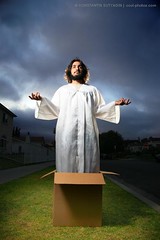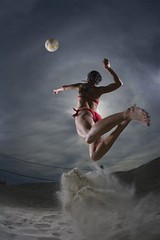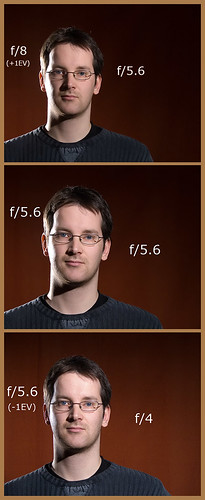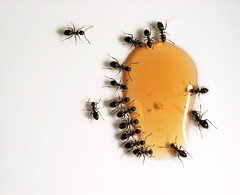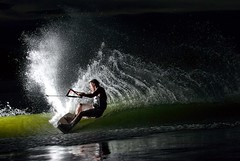 Congratulations to Ryan Taylor, for his stunning night shot of a wake boarder. Ryan used another person (out of the frame, at camera left) being pulled in an inner tube, to position a Nikon SB-800 in a protective bag.
Congratulations to Ryan Taylor, for his stunning night shot of a wake boarder. Ryan used another person (out of the frame, at camera left) being pulled in an inner tube, to position a Nikon SB-800 in a protective bag. The result was a dramatically lit photo which would have been impossible to duplicate with on-camera lighting.
This is just the type of innovative, small-flash thinking that pushes the envelope for everyone. And Ryan should be especially proud that of all of the winners, his alone was confirmed by the votes of his fellow readers. (Over one thousand people voted in our one-day run-off.)
The vote count was confirmed by both hand count and computer count, using two different people. (Thanks, Paul!)
Also, please join me in congratulating the other four finalists, whose photos were strong enough to ensure a very suspenseful day (with multiple lead changes) for all of us -- not the least of which, I am sure, the five remaining finalists. We will be naming the 1st-place winner later today. Now, get back to your drinking and stealing cheap, New Year's kisses.
And above all, drive, walk, or stumble safely home. If you have been tipping a bottle, use a designated driver or find a couch. I have a readership level to maintain...
Congratulations, Ryan. If you could please place in order the prizes below (and yes, it matters what order, in the event someone does not come forward to claim a prize in time) so that we may facilitate the speedy transfer of the loot.
Thanks again to the following sponsors for contributing such fantabulistic prizes:
• An AlienBees ABR800 Ringflash, courtesy AlienBees.
• A pair of Pocket Wizard Plus II's courtesy the MAC Group, facilitated by Midwest Photo Exchange.
• Elinchrom D-Lite 2 Kit, courtesy Elinchrom and facilitated by The Flash Centre.
• Two Nikon SB-800 Speedlights, courtesy Nikon USA.
• A Canon Powershot G9 Digital Camera, courtesy Canon USA, facilitated by Midwest Photo Exchange.
_____________________
Discussion, including details on the judging process and the honorable mention (6-10) photos, here.




